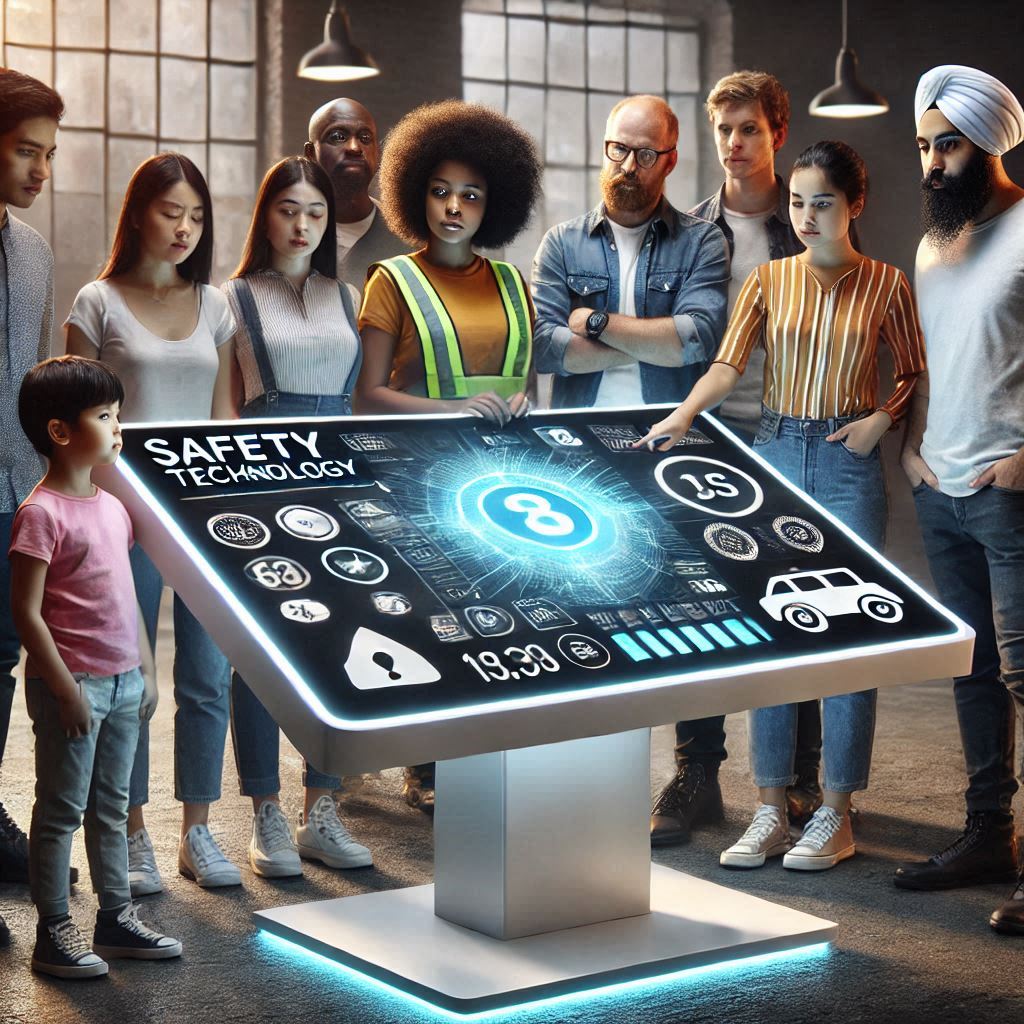Introduction
Understanding safety technology is essential in today’s world, where innovation plays a crucial role in protecting lives and enhancing security. This blog will explore how technology improves safety, the various types of safety technology, and a detailed description of each type.

How Does Technology Improve Safety?
Technology enhances safety in numerous ways. Firstly, it enables real-time monitoring of environments and individuals, allowing for immediate responses to potential hazards. Additionally, For instance, sensors can detect gas leaks or temperature changes, alerting personnel before accidents occur.
Secondly, predictive analytics can forecast potential incidents by analyzing data patterns from past accidents. This proactive approach helps organizations identify risk factors and implement preventive measures effectively.
Moreover, advanced materials and smart fabrics have revolutionized personal protective equipment (PPE). These innovations offer better protection against extreme conditions while providing comfort to users.
Lastly, technology fosters a culture of safety by facilitating training through virtual reality (VR) and augmented reality (AR). These immersive experiences prepare employees for real-life scenarios without exposing them to actual risks.
Types of Safety Technology
Safety technology can be categorized into several types, each serving unique purposes. Here’s an overview:
- Firstly, Wearable Technology
- Secondly, Drones and Robots
- Thirdly, Safety Apps
- Then, Virtual Reality (VR) and Augmented Reality (AR)
- Advanced Monitoring Systems
- Smart Personal Protective Equipment (PPE)
- Finally, Automation and Robotics
1. Wearable safety technology
Wearable devices are designed to monitor workers’ health and safety in real time. They can track vital signs, fatigue levels, and environmental conditions. For example:
- Firstly, Smart helmets equipped with sensors can alert wearers to potential hazards.
- Secondly, GPS-enabled wearables help track employee locations in hazardous environments, ensuring their safety.
These devices not only enhance safety but also improve overall workplace morale by demonstrating a commitment to employee well-being.
2. Drones and Robots for safety technology
Drones and robots have become invaluable in various industries for their ability to perform dangerous tasks without putting human lives at risk. They can:
- Inspect hard-to-reach areas such as construction sites or hazardous environments.
- Handle materials that pose health risks to humans.
By automating these tasks, organizations reduce the likelihood of accidents caused by human error.
3. safety technology Apps
Smartphone applications are increasingly used to assess and improve workplace safety. These apps can:
- Firstly, Measure noise levels and evaluate working conditions.
- Secondly, Provide guidelines for handling hazardous materials.
Many apps are user-friendly and accessible, making them an effective tool for promoting safety awareness among employees[2].
4. Virtual Reality (VR) and Augmented Reality (AR)
VR and AR technologies have transformed training methodologies in workplace safety. They allow employees to:
- Then, Engage in realistic simulations of hazardous situations.
- Finally, Practice emergency response drills without the associated risks.
This immersive training approach enhances understanding and preparedness for potential dangers.
5. Advanced Monitoring Systems for safety technology
Modern monitoring systems utilize sensors that detect environmental hazards like gas leaks or temperature fluctuations. These systems enable:
- Quick identification of risks before they escalate.
- Continuous oversight of workplace conditions.
Such technologies ensure a safer working environment by facilitating prompt responses to emergencies.
6. Smart Personal Protective Equipment (PPE)
Innovations in PPE have led to the development of smart gear that monitors worker conditions in real time. Examples include:
- Firstly, Connected hard hats that track fatigue levels.
- Secondly, Safety glasses with built-in alerts for environmental hazards.
These advancements significantly enhance the effectiveness of traditional protective gear[3][4].
7. Automation and Robotics safety technology
Automation has revolutionized industries by reducing the need for humans to perform high-risk tasks. Moreover, Robots can handle repetitive or dangerous jobs, such as:
- Firstly, Operating machinery in hazardous environments.
- Secondly, Conducting inspections in unsafe areas.
By minimizing human involvement in risky operations, automation helps decrease workplace injuries.
Conclusion
In summary, understanding safety technology is crucial for fostering a secure environment in various industries. By leveraging advancements such as wearable devices, drones, VR training, and smart PPE, organizations can significantly enhance workplace safety.
As technology continues to evolve, its role in improving safety will only grow more prominent. Moreover, Embracing these innovations not only protects employees but also cultivates a culture of safety that benefits everyone involved.
Investing in safety technology is not just about compliance; it’s about ensuring the well-being of workers and creating a productive work environment where everyone can thrive.
